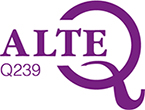On vocabulary
Vocabulary has crucial importance in the development of speaking skills and plays a fundamental role in communication. A young (or not so young) person learning English must know how to use grammar and vocabulary and should be aware of the words’ pronunciation. This is called linguistic competence. Besides, a language learner should also know when, why and how to start speaking. This we call sociolinguistic competence.
Some people learning the English language have difficulty learning how to speak correctly, meaning fluent and grammatically precise English. One of the reasons behind this is related to their deficiencies with vocabulary. According to David Arthur Wilkins, an early proponent of communicative language teaching, vocabulary is as important as grammar. Improving vocabulary does not mean the memorization of separate words only, but also the acquisition and learning of collocations and phrases.
Most language learner know how important it is to acquire an adequate vocabulary and do their best to learn as many words as possible. But what does it mean to know a word? Is it enough if we know its definition in a dictionary? The answer is no. The language learner should also be able to write down the word and know how to pronounce it. Beyond the content of the dictionary definition, the meaning of a particular word also includes the knowledge of its related synonyms and antonyms. This group of words is called word families. Finally the use of a certain word is about using it appropriately in various contexts and knowing its most frequent collocations.
What is the magic number?
The question we have to ask ourselves is whether it is possible to define or quantify how many words we need to know if we want to communicate successfully at an intermediate ECL language exam for example. Naturally, communication also includes listening and reading comprehension.
It is important to emphasize that words do not occur at the same rate of frequency in our everyday speech. In English function words, for example, appear much more frequently making up about half of an average text. Language learners normally learn them at the beginning of their studies so it is not difficult to understand them. According to the experts of the field, Hu and Nation, the first two thousand most frequent words make up about 90 of an average conversation and around 80% of a written article. Another researcher, Norbert Schmitt says that we need to know about 2000 word families to be able to communicate in an everyday situation using a foreign language.
The test developers of the ECL Language Exam wanted to find out what proportion of their listening and reading comprehension text are covered by the first two thousand most frequent English words. They therefore randomly picked ten listening and ten reading comprehension texts from the ECL tests used in the past few years and analysed them with the help of two computer programmes called Lextutor and Range. These programmes are able to show what proportion of a given text’s words belong to the first and second two thousand most frequently used English words. Words like “car”, “police” or “happy” can be found among the first thousand such words, while words like a “method”, “equipment” or “disease” belong to the second thousand.
According to the results of our research if a test taker knows the first two thousand most frequently occurring English words he/she will know about 90% of the words appearing in the listening comprehension texts at levels B1 and B2, while this proportion is around 86% in the case of texts used for testing reading comprehension. At level C1 the same percentage is 83% for listening comprehension and 85% for reading. This data almost precisely complies with what has been found by the researchers of this field, Hu and Nation. They have found that the first two thousand most frequently used words make up 90.3% of an average conversation and 81.1% of an average newspaper article.
Percentage of words belonging to the first two thousand most frequently used English words
|
Texts used for testing listening comprehension
|
Texts used for testing reading comprehension
|
||||||||
|
B1 |
B2 |
C1 |
B1 |
B2 |
C1 |
||||
|
90,75%
|
88,99% |
82,87% |
86,90% |
86,24% |
85,10% |
||||
When the Common European Framework of Reference was developed, we can find a list of words among the materials related to the threshold level. In the case of English as a foreign language this list contains a little more than the first two thousand most frequently occurring words. It seems that we have to cross this boundary in order to understand a foreign language.
Is this enough to take a successful language exam?
Again, we have to ask ourselves what is it worth if we know only the first two thousand English words. One researcher, Laufer has come to the conclusion that in order to read fluently and understand a given text completely we need to know 95% of the words appearing in that text. Other experts, including Hirsch, Hu and Nation have raised this threshold up to 98% which presupposes the knowledge of even more words.
In conclusion we have to say that if a test taker has learned the first two thousand words he/she will know 80-90% of the words (depending on the level) occurring in an ECL test, however it is not enough to understand the text completely. On the basis of this we suggest that test takers should learn first three thousand most frequently used English words, at least.
The links below provide the necessary information of what words you (would) need to learn.
The first 2000 words:
http://www.ingilish.com/2000mostcommonwords.htm
The first 3000 words:
http://www.lextutor.ca/freq/lists_download/longman_3000_list.pdf
Word family list:
http://www.robwaring.org/vocab/wordlists/full1000.txt
Here you can check what category a particular word belongs to.
http://www.wordcount.org/main.php






